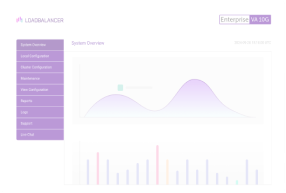Load balancing Media Asset Management (MAM)
Benefits of load balancing Media Asset Management (MAM)
Load balancing Media Asset Management (MAM) ensures:
- Scalability
- Optimized performance
- Resilience and High Availability (HA)
About load balancing Media Asset Management (MAM)
There is an ever growing demand for digital content in today’s broadcast industry. This means the increased need to organize, assemble and deliver digital media assets as efficiently as possible.
Digital and Media Asset Management (DAM/MAM) products provide a centralized interface to capture, manage and deliver media assets on demand. This software enables users to centrally manage the ingestion, capture, editing and storage of digital media assets. More advanced features include creation of workflows and order fulfilment.
These system have transformed the content production and distribution ecosystem. They simplify the management of media files and improving team efficiency and collaboration. As the demand for content grows, delivering a reliable and scalable platform is crucial. It must be capable of supporting countless media sources and high numbers of users. If the system fails then any advantages in your workflow are lost.
Why Loadbalancer.org for Media Asset Management (MAM)?
Loadbalancer’s intuitive Enterprise Application Delivery Controller (ADC) is designed to save time and money with a clever, not complex, WebUI.
Easily configure, deploy, manage, and maintain our Enterprise load balancer, reducing complexity and the risk of human error. For a difference you can see in just minutes.
And with WAF and GSLB included straight out-of-the-box, there’s no hidden costs, so the prices you see on our website are fully transparent.
More on what’s possible with Loadbalancer.org.
How to load balance Media Asset Management (MAM)
By clustering your web, application and databases onto multiple servers you can meet processing, user load and redundancy/failover requirements and allow seamless maintenance.
Load balancing distributes the user connection requests amongst the server clusters. This ensures that your application remains highly available at all times. By leveraging the processing capability of multiple application servers, you can prevent bottlenecks. Ensure that resource intensive tasks such as transcoding don’t become delayed or fail altogether. Users want an uninterrupted process that is fast, just works and is future proof.
The load balancer can be deployed in 4 fundamental ways: Layer 4 DR mode, Layer 4 NAT mode, Layer 4 SNAT mode, and Layer 7 Reverse Proxy (Layer 7 SNAT mode).
For detailed instructions on how to deploy each of these modes, refer to the Admin Manual below.
Example Layer 4 DR configuration

With Layer 4 Direct Routing, a node does not rely on sending its reply traffic via the load balancer. Instead, the back-end nodes have the VIP or load balancer address attached to their local interface, and so can send a TCP reply directly back to the client with the source address the client is expecting.
















